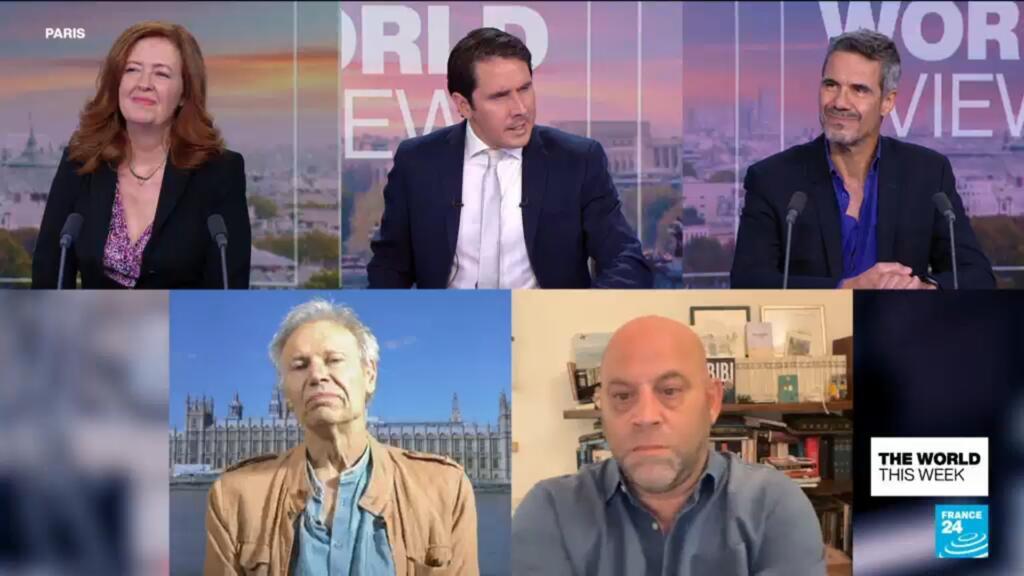Tehran is recently preventing its cooperation with the International Atomic Energy Agency (IAEA) in view of the US and Israeli airstrikes.
“Iran will suspend its cooperation with IAEA until the Iranian nuclear facilities are ensured,” Parliamentary President Mohammad Baghar Galibaf said last week on the state television, President Masaud Peseshkian signed the move on this Wednesday.
The nuances of the measurement, however, remain unclear.
For example, it is not yet known how it will affect the IAEA inspectors made in Iran through a 12-day struggle.
The Vienna-based United Nations agency hopes that Iran’s three top nuclear features are expected to get more information about the situation of the three, which is targeted by the Fordo, Isfahan and Natanaj-Vahich by American Israeli bombing.
Therefore, it is not clear that Iran is ready to live in the Global Arms Control, after the attack of its features.
“The fact is that the thesis facilities were attacked under the safety measures, while there is no evidence that they were being used for weapons, the debate in Iran is shaking the debate on whether the NPT still provides security price,” Calcy Deonport, Arms Control Association Media Tank told the director of the Director of Non -Professional Demonports.
Next to the Israeli attacks on Iraq, IAEA warned that Iran was the only nation with nuclear weapons that enrich uranium at the grade levels of near-hairs and had sufficient material for several atomic bombs. At the same time, however, IAEA insisted that “there was no evidence of a systematic effort to enter nuclear weapons.”
America helped Iran launch nuclear programs
Tehran’s atomic program has a long and complex history that is going back to the 1950s and Shah Mohammad Reza Pahlavi.
The US -backed emperor decided to attend an initiative known as “Peace for Atomic” by US President Dwight Essenhover, which aims to tell other nations about developing people for civil nuclear technology. Iran took advantage of the proposal to build the foundation of its own nuclear program.
Tehran So joined IAEA in 1958, exactly one year after the United Nations agency was found in Vienna.
The nuclear program was seen as a reputation project in Iran. The country wanted to promote the production of its own nuclear fuel independently of foreign suppliers, independently of foreign suppliers, by reducing the consumption of oil and gas.
In 1970, Iran signed the Annual Treaty, which allows for civil use of nuclear power under IAEA supervision.
After revolution
The 1979 Islamist revolution left Iran into chaos.
The US stopped its delivery of nuclear fuel for the research reactor in Tehran. In 1980, Iraq attacked Iran to control its oil fields, awakening the war. Western companies, including German, gave up their cooperation with the Iran nuclear program.
In the early 1980s, rumors began to spread that Iraq was building an nuclear weapon.
Israel, who considered Saddam Hussain a more threat than the Iranian Mullas, was actually used by Iranian secret services to bomb Iraq’s nuclear reactor Osirk in 1981.
After Iran-IQ ended in 1988, Iran began importing technology from Pakistan, China and Russia to enrich uranium and develop its own nuclear fuel.
The government hoped to prove that Iran was able to pursue high -tech projects, and its atomic program became a symbol of the nation’s strength.
Iranian officials never denied the fact that Tehran had the ability to make nuclear weapons in an emergency.
Akbar Atmad, a person known as the father of Iran’s nuclear program, believed that no country had the right to determine how other nations followed the nuclear policy, and he maintained that situation even after the Islamist revolution in 1979.
The Pharidown Abbasi, who led the Iran’s nuclear agency, unless he was recently killed in Israeli airstrikes, ie publicly stated that Iran needs to be able to reach the weapon-grade level, demands a level of enrichment.
Trump expects ‘better deal’
In 2003, IAEA inspectors and satellite monitoring indicated the possibility of pursuing a secret military nuclear program.
At that time, German Foreign Minister, Joshka Fisher, assured his counterparts to start interaction with Iran in the UK and France, which aims to implement strict controls of the Iranian nuclear program with the help of IAEA.
After 12 long years of talks, the US, China, Russia and three European powers came to a comprehensive nuclear deal with Iran, who know JCPOA.
In 2018, however, US President Donald Trump excluded his country out of the agreement to “better deal”. Iran gradually responded to its commitments and began a high-level uranium enhancement in 2019.
Today, Iran has highly rich uranium and many advanced centrifuge in Iran which are used to process radioactive elements.
Libya as a lesson for Iran
Despite the US claim that Iran’s nuclear program has been “slanting”, many experts warned that Iran may rebuild its nuclear features.
Jeffrey Lewis, a non-existing specialist at the Middlebury Institute of International Studies at Montere, California, said, “There are some real importing things that have not been hit at the end of the day.”
Right now, Iran is unlikely to compromise, Irani -born reporter Mehradad Farahrand said.
“Iran retreats as a weakness in a warm condition” and this notion is probably the biggest obstacle to the revival of diplomacy, he said.
Looking at the future, according to the Calci Devanport, the perspective of Iran is likely to be shaped by examples of Libya and North Korea.
“It would be surprising if the advisors around the supreme leader are arguing that Iran requires nuclear weapons to protect against further attacks,” a non-except expert.
Dawanport told DW, “Iran looks at the example of Libya, where Mammer Dandfi left the country’s nuclear weapon program, returned to a good position in NPT, and then overthrew by Westernly -backed forces,” Devanport told DW.
In turn, North Korean abandoned the non-exercise treaty in 2003, developed its nuclear weapons, and was strongly ruled by Kim Jong An-Rimens.
This article has been translated from German


